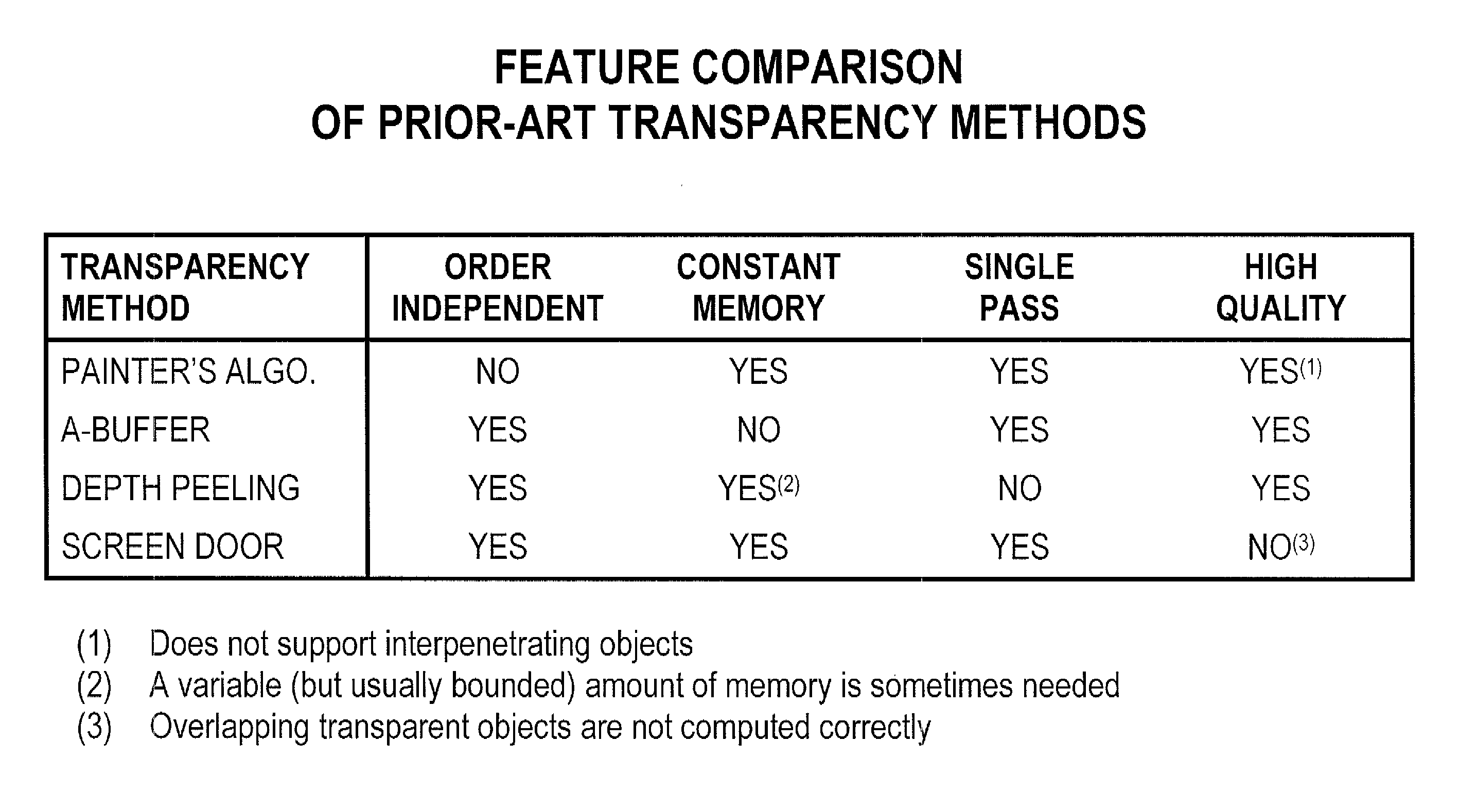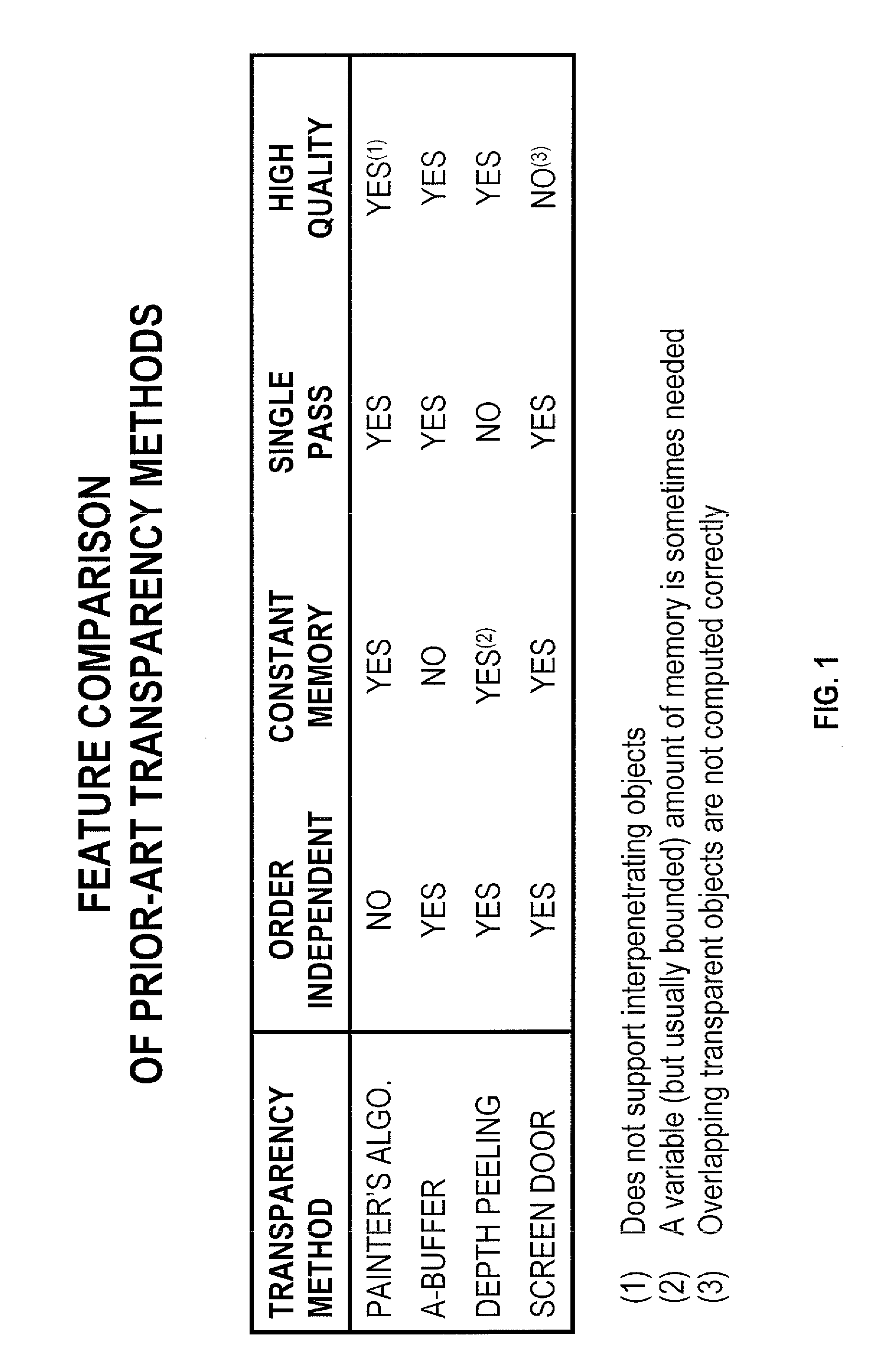Single-pass and order-independent transparency in computer graphics using contant memory
a computer graphics and contant memory technology, applied in the field of computer graphics or imaging, can solve the problems of inability to calculate correct solutions, prohibitively expensive, and inability to render transparent objects in computer graphics, and achieve the effect of high-quality and realistic images and reliable rendering
- Summary
- Abstract
- Description
- Claims
- Application Information
AI Technical Summary
Benefits of technology
Problems solved by technology
Method used
Image
Examples
Embodiment Construction
[0036]FIG. 2 depicts an advantageous, non-limiting system 20 of the present invention. A central processing unit (CPU) or a graphics processing unit (GPU) 22 is connected to a framebuffer 24 comprising a portion of memory. In an embodiment of the present invention, the framebuffer may be comprised of a fixed number of bits-per-pixel; therefore the required allocation size of the framebuffer may be a strictly constant and deterministic function of image resolution. This is a highly desirable and advantageous prerequisite and / or consequence of the present invention, which will be explained shortly and in detail. Also attached to system bus 26 are other optional non-limiting peripherals, e.g., a mouse and / or joystick 28, a display device (analog or digital) 30, a network interface 32, and / or a storage device 34 such as a hard drive, CD-ROM or a Blu-Ray Disc®.
[0037]The system bus may also be attached to a virtual memory subsystem 36. In one embodiment of the present invention, the porti...
PUM
 Login to View More
Login to View More Abstract
Description
Claims
Application Information
 Login to View More
Login to View More - R&D
- Intellectual Property
- Life Sciences
- Materials
- Tech Scout
- Unparalleled Data Quality
- Higher Quality Content
- 60% Fewer Hallucinations
Browse by: Latest US Patents, China's latest patents, Technical Efficacy Thesaurus, Application Domain, Technology Topic, Popular Technical Reports.
© 2025 PatSnap. All rights reserved.Legal|Privacy policy|Modern Slavery Act Transparency Statement|Sitemap|About US| Contact US: help@patsnap.com



